When it comes to food prep, there are few things more frustrating than trying to slice through a juicy red tomato only to find your knife is so dull it tears the flesh and seeds, and juice ends up oozing out all over the cutting board. With a top-of-the-line knife set, they'll quickly become useless if you don't maintain them and keep them sharp. As any chef will tell you, you're only as good as your best kitchen knives no matter how advanced your culinary skills have become.
But what’s the best way to sharpen a knife? How often do you need to sharpen kitchen knives? How do you know if you need to sharpen a knife? If you’ve never learned, you’re certainly not alone. Keep reading to learn how to sharpen a knife to make cooking safer and easier.
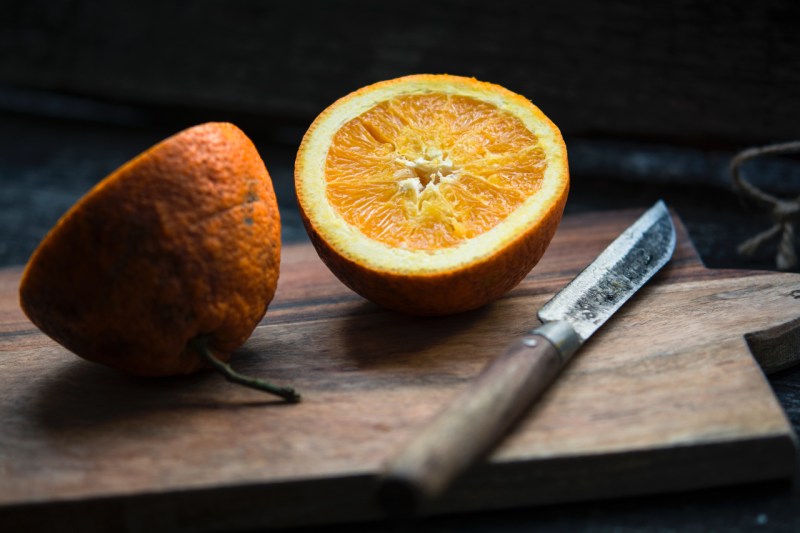
Why do you need to keep your knives sharp?
Even if you don't step foot in a kitchen but use knives for other things like work or outdoor survival, you need to keep them sharp. The bottom line is dull knives are dangerous. That's because you have a greater chance of misusing a dull knife and injuring yourself while sawing away at whatever you might be trying to cut, slice, or whittle. While proper handling is crucial, a razor-sharp blade should do the job in one stroke.
The art of knife blade sharpening can be intimidating and definitely takes some practice to perfect. However, learning to sharpen yourself is the prudent choice, instead of running out and buying a new knife every time it gets dull. You can also avoid the process altogether by paying a professional bladesmith to sharpen your knives. There are knife companies that offer this service, and if you can't seem to get knife sharpening down, there's no shame in going this route.
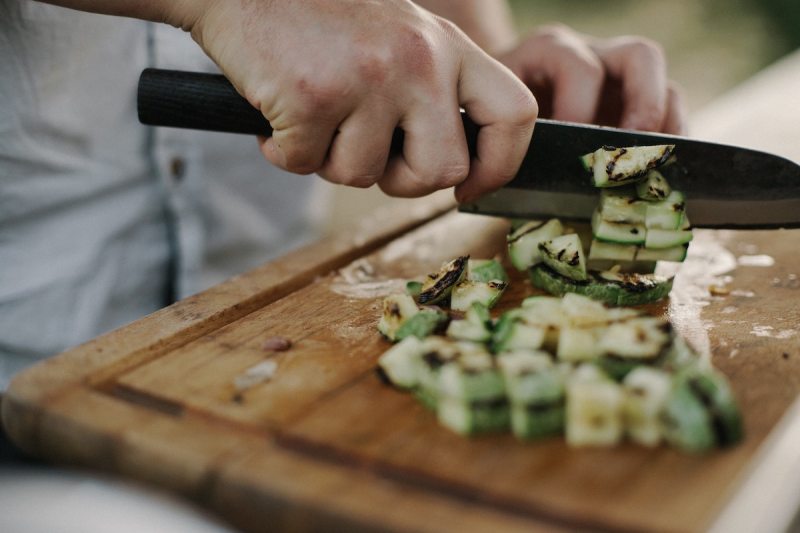
How often do you need to sharpen a knife?
Perhaps the first time you used a new knife was shortly after gifts started trickling in from a wedding registry or you outfitted the kitchen of your first adult home. It’s probably difficult to recall how supremely sharp and precise your knives were at their initial unfurling, because even after just a few weeks of use, a new knife will become dull.
Depending on the quality of your knives, how often you use them, and how well you care for them and store them, kitchen knives usually need to be sharpened every few months. Plan to sharpen your knives two to four times per year but hone them more frequently.
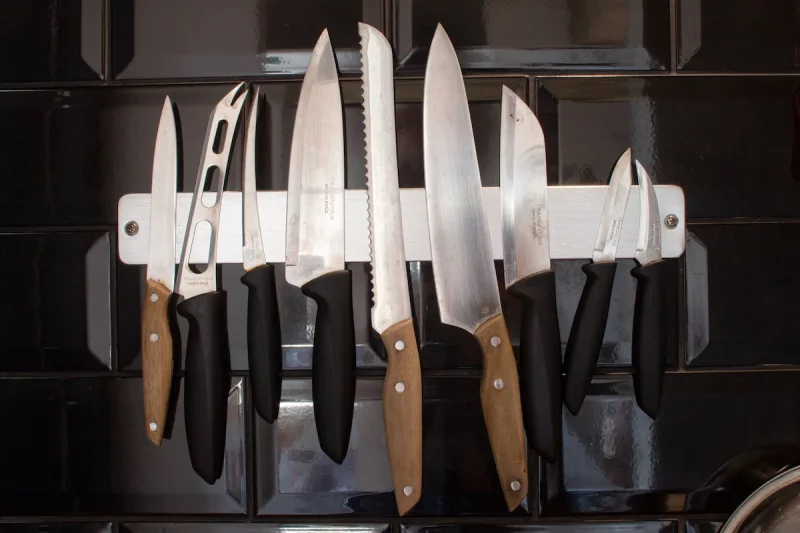
What angle should I use to sharpen a knife?
Most new knives come with a manufacturer’s suggested angle for sharpening. If you have this information, follow the angle they recommend. If not, select and use a 15- to 30-degree angle per side, keeping in mind that a shallower angle yields a sharper edge that doesn’t last as long, while steeper angles are less sharp but more durable.
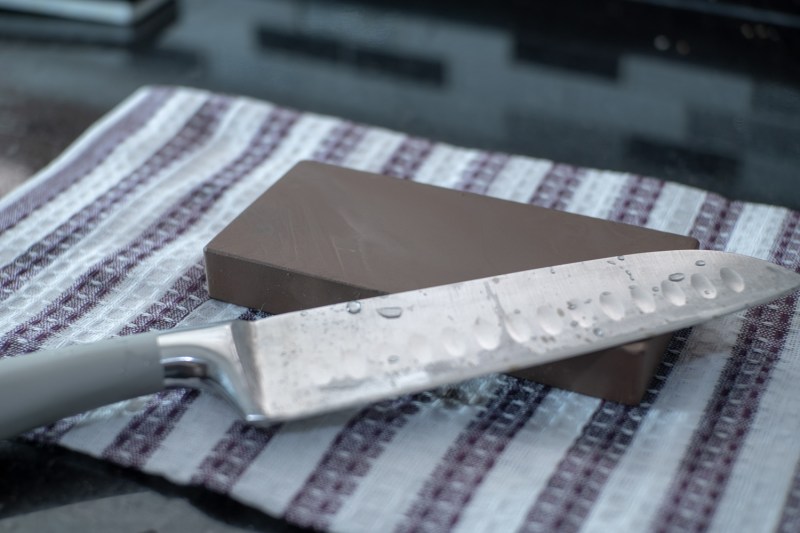
What is the best way to sharpen a knife?
Like most knife experts, we believe using a whetstone to sharpen your blades is the best method for knife longevity. However, there are other methods available that we'll dive into a bit later.
Whetstones maintain the overall integrity of your knife's edge and the life of your blade. Some whetstones are designed to use water and some oil. In our opinion, water stones are the best option. There's less mess and no oil you have to purchase.
Whetstones have two sides: A coarse and fine grit. The coarse-grit side is used to reform the blade's edge, and the fine-grit side is to fine-tune the edge and give it that razor-sharp quality. Depending on the dullness of your knife, just using the fine grit side is enough to bring back the sharpness of the blade. But if your knife is super dull, you'll want to start out with the coarse grit.
Step 1: Prep your tools.
Soak the stone before sharpening for about 10-30 minutes so water can impregnate it. You'll know enough time has passed when the stone makes very few bubbles.
Step 2: Set up your work station.
Place a damp towel down on your countertop or table to secure the stone while sharpening. Have another towel handy to wipe down your blade periodically and a cup of water so you can occasionally re-apply water to the whetstone for lubricant.
Step 3: Get into position.
Hold the knife handle firmly in your dominant hand. Remember you want to get the recommended angle. Some whetstones come with a guide you can attach to the knife that provides the ideal sharpening angle. However, it's good practice to know how to achieve this angle without a guide.
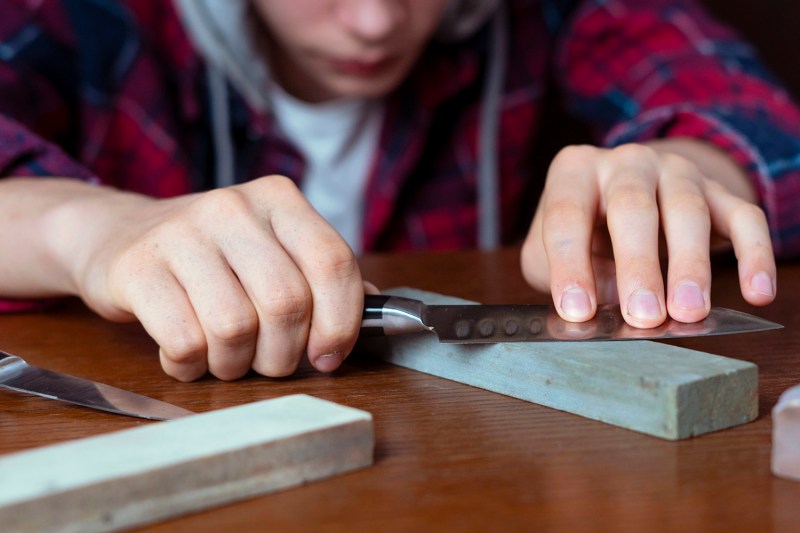
Step 4: Get sharpening.
Run the length of your blade in a rainbow arch motion, starting with the tip at the base of the whetstone and ending with the bolster at the other end of the stone, applying between 2-3 pounds of pressure. Test it with a digital scale if you don't know what 2-3 pounds of pressure feels like.
Step 5: Use the coarse and fine sides as necessary.
If starting out on the coarse side, you likely will only need to do this around a dozen times until you start to feel the edge return. You might need to do this up to a few dozen times on the fine-grit side.
Step 6: Switch to honing.
Once you think you have your desired edge, hone the blade with a honing steel and clean the knife.
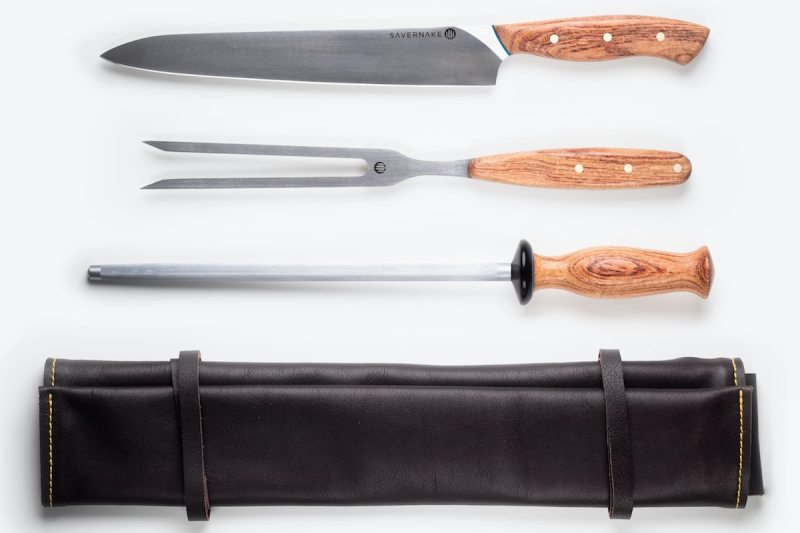
What’s the difference between honing and sharpening a knife?
While honing and sharpening are often lumped together, they’re actually two different things. Honing refers to straightening out the blade of a knife. Essentially, as you use a knife over time, the blade becomes somewhat bent or curved out of its initial position. Scraping the blade at an angle against the coarse surface of a honing steel helps guide the edge back into its original position, which can help preserve the life of a knife by protecting the integrity of the design and preventing undue material stress. It also makes the knife more balanced and functional as it’s intended to be.
Honing a knife is a more gentle process with more subtle results compared to sharpening a knife. Sharpening a knife involves aggressively polishing the knife against a stone or ceramic surface (harder than a honing steel) to reform the blade and actually shave bits of it away to whittle a sharper blade, so it ages the knife. The difference in the aggressiveness and resulting impact on the knife is why sharpening a knife should be performed only when necessary (a few times per year), but you can hone a knife more often.
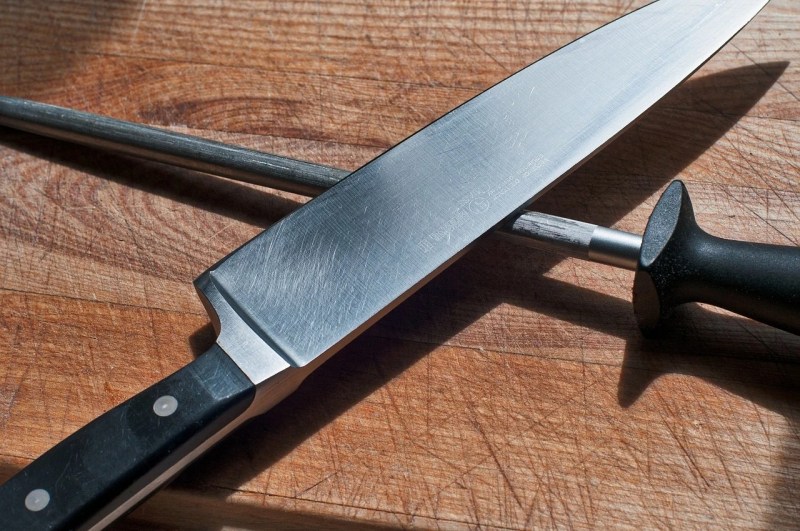
How do you hone a knife?
A honing steel, sometimes called a honing rod, is used to hone a knife. It takes a little practice to nail the technique, but stick with it.
Step 1: Set yourself up.
Hold the honing steel in your nondominant hand with the tip pointing up relative to the handle and pointing away from your body. Grip the knife handle in your dominant hand with your thumb up along the spine.
Step 2: Get the right angle.
Place the knife at approximately a 20-degree angle relative to the honing rod. Maintaining consistency in the angle is more important than the exact measurement of the angle.
Step 3: Sharpen one way.
Keeping the angle, start from the heel of the knife and drag it across the top surface (upward-facing surface) of the honing steel, ending with the tip when you reach the end of the honing steel. You’ll need to move your arm and wrist to make this smooth motion.
Step 4: Switch directions.
Move the knife to the bottom surface of the honing steel and use the same angle to drag it back from heel to tip. Complete six to eight revolutions to hone your knife.

Is it better to sharpen a knife blade wet or dry?
There are pros and cons to both wet and dry knife sharpening.
Dry sharpening is a more traditional method often used with waterstones. It's generally considered to be a faster and easier method, but it can be more difficult to get a consistent and even edge. Dry sharpening can also produce more heat, which can damage the blade if not done carefully.
Wet sharpening uses a liquid lubricant, such as water or oil, to help reduce friction and heat. This makes it a more forgiving method, and it can be easier to get a consistent edge. However, wet sharpening can be slower and more messy than dry sharpening.
Ultimately, the best way to sharpen a knife blade depends on personal preference and experience. If you're new to knife sharpening, we recommend starting with wet sharpening. It's easier to learn and less likely to damage your blade. Once you have more experience, you can experiment with dry sharpening to see which method you prefer.
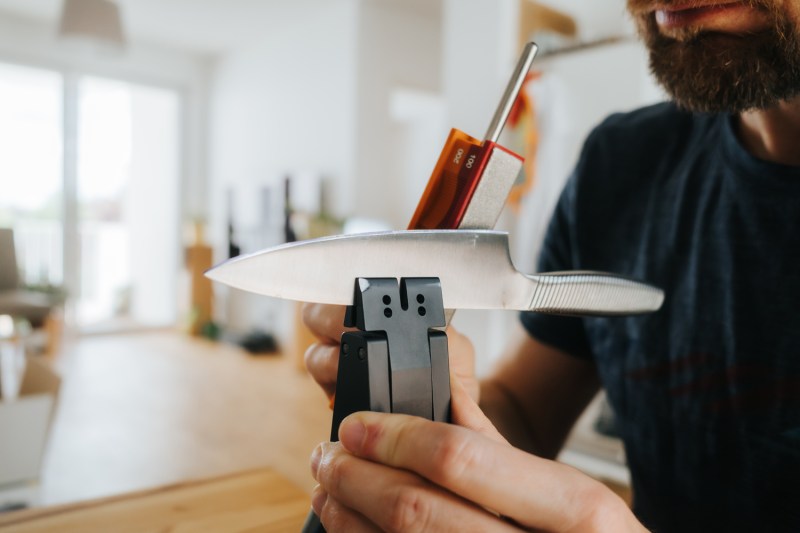
Can you use a knife sharpener instead?
There are several different knife sharpeners on the market that claim to save you time and are easier to use. While this might be the case, with almost every knife blade sharpening product, your knives pay the price. That's because nearly every knife sharpener uses a metal or ceramic slots approach to sharpen knives, which literally shaves metal off your blade's edge to make it sharper.
When using a knife sharpener, it's imperative to do it away from open food and clean the surface if you plan to cook on it afterward. Otherwise, you run the risk of getting metal shavings in your food.
Knife sharpeners are definitely the quick fix to sharper knives. Still, we don't recommend using one on an expensive blade you really care about. Knife sharpeners are great for cheaper knives that you don't mind replacing over time. That's because if you use a knife sharpener regularly, you'll need to. The knife's blade will noticeably wear down over time to the point where it will affect the design and natural cutting motion.
- Stationary knife sharpeners. The sharpener remains fixed on the countertop, and you pull your knife slowly through from bolster to tip. Stationary sharpeners usually have at least two sharpening settings: Coarse and fine. In most cases, blades only need a quick touch-up in the fine slot. But after extended periods of heavy use without any sharpening, the edge might need to be reformed in the coarse setting, then honed to a fine tip in the fine slot. Some stationary knife sharpeners have sharpening slots for serrated knives. Always refer to the user manual on how to use this setting.
- Handheld knife sharpeners. With handheld knife sharpeners, the idea is the same as a stationary sharpener but in reverse. The knife should remain stationary as you pull the sharpener over the blade. Hold the knife sharpener in your dominant hand and hold the knife in your other hand on the countertop with the edge facing the ceiling. Carefully run the sharpener over the blade several times until the desired sharpness is achieved.
- Electric knife sharpeners. Electric knife sharpeners fall under the stationary knife sharpener category and are used similarly. The primary difference is that they use rotating ceramic wheels that are supposed to do more of the work for you.
We're not big fans of knife sharpeners, and the only "correct" way to sharpen a knife is with a whetstone. But the problem with a whetstone is that it's only the "best" way if you do it correctly. So we suggest taking some time practicing with an older, beat-up knife you own until you feel like you have the process down. Then, once you feel comfortable, move on to your expensive knife set. And remember, there's nothing wrong with paying a professional to sharpen your knives for you. It will save you time, and you most likely won't be disappointed with the result.




